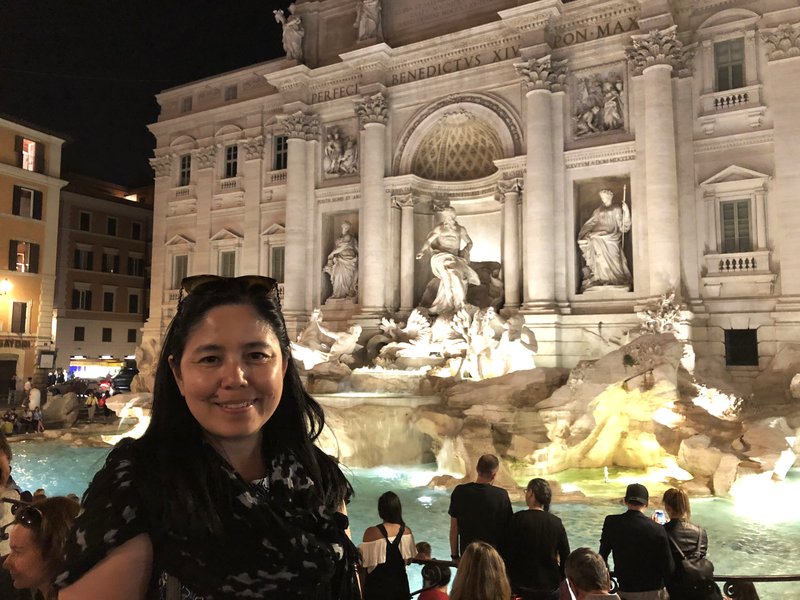
July 29, 2024

The Trevi Fountain (Fontana di Trevi) is one of Rome's most iconic landmarks and a masterpiece of Baroque architecture. It is very popular to tourists. The best time to visit is early in the morning to avoid the crowd.
The centerpiece of the Trevi Fountain is the statue of Oceanus (often mistaken for Neptune), the god of all water. Oceanus is depicted riding a shell-shaped chariot pulled by two sea horses, each guided by a Triton (a merman figure). One horse is calm and obedient, while the other is restive and wild, symbolizing the contrasting moods of the sea.
On either side of Oceanus are niches with statues of Abundance (holding a horn of plenty) and Health (holding a cup from which a snake drinks). Above these, there are bas-reliefs depicting the origins of the Aqua Virgo. Latter was one of 11 water supply of Rome during the reign of Augustus in 19 BC
The entire fountain is integrated into the façade of the Palazzo Poli, a grand building that serves as the backdrop. Palazzo Poli was a palace from the 16th century but from the 18th century it serves as backdrop of the Trevi Fountain.
The fountain is a characteristic of Baroque art. The design reflects the Baroque era's emphasis on grandeur, movement, and detail. The interplay of water, sculptures, and architecture creates a theatrical and immersive experience. You can make your own story or interpretation of its design. The use of Oceanus and sea creatures signifies the importance of water in Rome's history and culture and its mythological connections.
The centerpiece of the Trevi Fountain is the statue of Oceanus (often mistaken for Neptune), the god of all water. Oceanus is depicted riding a shell-shaped chariot pulled by two sea horses, each guided by a Triton (a merman figure). One horse is calm and obedient, while the other is restive and wild, symbolizing the contrasting moods of the sea.
On either side of Oceanus are niches with statues of Abundance (holding a horn of plenty) and Health (holding a cup from which a snake drinks). Above these, there are bas-reliefs depicting the origins of the Aqua Virgo. Latter was one of 11 water supply of Rome during the reign of Augustus in 19 BC
The entire fountain is integrated into the façade of the Palazzo Poli, a grand building that serves as the backdrop. Palazzo Poli was a palace from the 16th century but from the 18th century it serves as backdrop of the Trevi Fountain.
The fountain is a characteristic of Baroque art. The design reflects the Baroque era's emphasis on grandeur, movement, and detail. The interplay of water, sculptures, and architecture creates a theatrical and immersive experience. You can make your own story or interpretation of its design. The use of Oceanus and sea creatures signifies the importance of water in Rome's history and culture and its mythological connections.

As one of Rome's most visited sites, the Trevi Fountain attracts millions of tourists annually. The tradition of tossing a coin into the fountain, with the right hand over the left shoulder, is believed to ensure a return to Rome. An estimated €3,000 is thrown into the fountain each day, which is collected and donated to charity.

Due to its size and the often dense crowds, capturing the entire fountain in one photo can be challenging. A wide-angle lens or panoramic mode can help, but the true essence of the fountain is often best captured in multiple shots or by focusing on specific details.

the crowd during the daytime

It was almost midnight. There were still crowd. We were to end the day.
Updated on September 22, 2024
Comments
1
 27
27
 27
27
Views: 12438


The Trevi Fountain is a must-see in Rome! While it looks stunning in photos, nothing compares to walking down the cobblestone street and seeing it in person. Visit early in the morning to avoid the crowd.